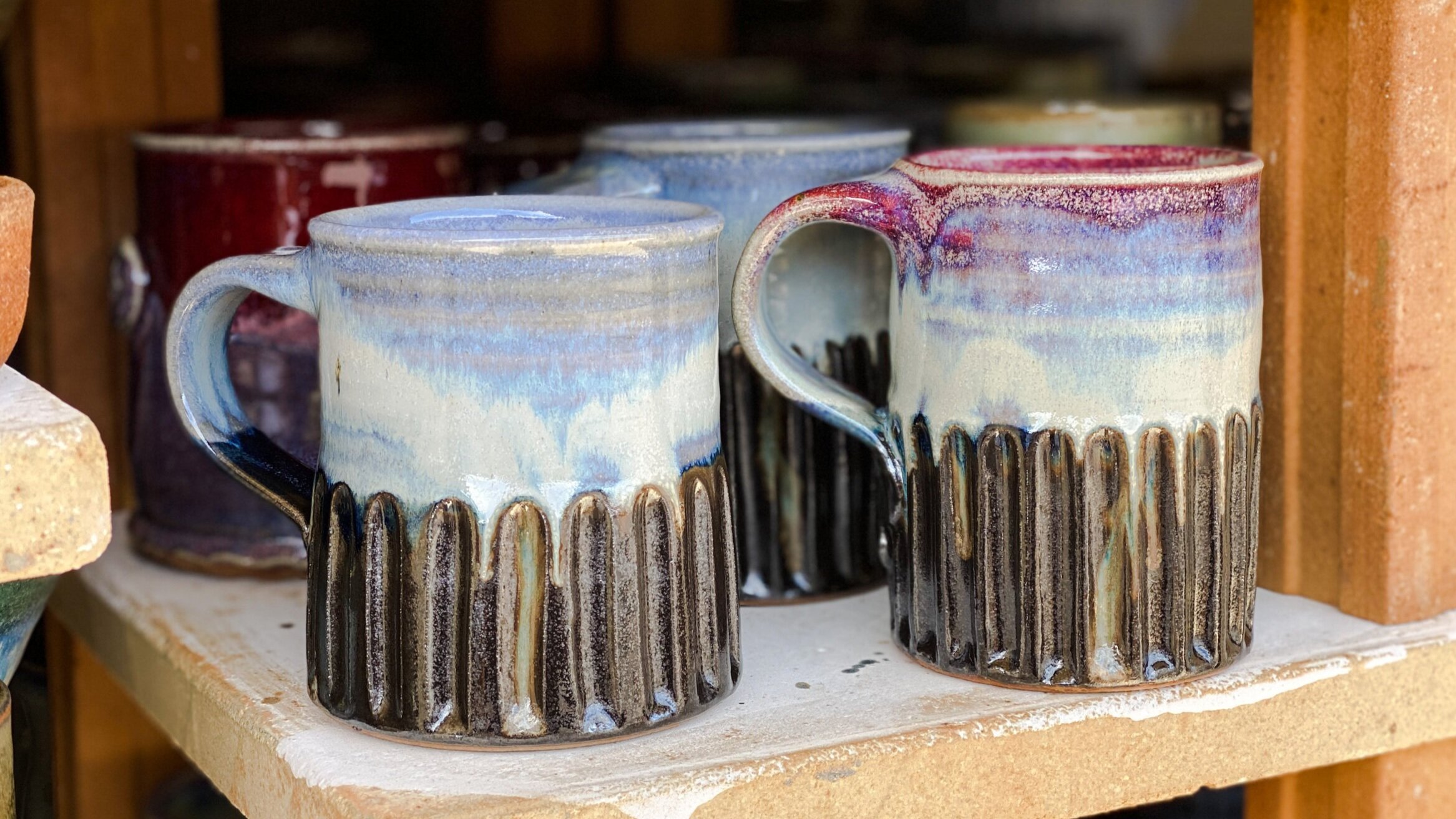“How do you get your colors?” This is a question we get a lot from people new to pottery collecting. This question is a lot like asking, “why is the sky blue?”. There is a short and a long answer. Like learning about the color of the sky, the long answer leads one to deepen their understanding of science and art. In today’s blog post, I hope to give anyone interested in our pottery more knowledge about the nature of glazes. To understand how we get the colors in our pottery, one needs to understand what glazes are, how glazes are made, and how the kiln's firing affects the colors.
Kent’s colorful platter bowl from the last firing!
What is a glaze?
A glaze begins as a unique blend of raw minerals mixed to a paint-like consistency. The colors on our pots are glazes applied to bisque ware, pots that have already been fired to about 1753° or Cone 08, and then fired to 2381°, Cone 10, or even hotter! (A cone is a unit of measurement that potters use to determine the temperature of the firing). In the second firing, the applied glaze melts and bonds to the pot, becoming a vitreous glass-like surface that fuses onto the clay.
We make cone packs for each glaze firing to monitor the temperature. We watch the cones melt and bend through the spyholes in the kiln.
How are glazes made?
Glazes are made by weighing out dry minerals and mixing them together following recipes. Each recipe includes at least a glass, a clay, and a flux, which lowers the melting temperature of the glaze mixture. Most recipes include more than one of each and also include minerals that opacify or color the mature glaze.
A glaze recipe is typically written as a 100 gram batch. 100 grams is a small amount of glaze that potters use to make “test tiles”. After lots of experimentation to get the desired glaze, we mix larger glaze batches for our studio. Because we dip-glaze at Blue Sage Pottery, we have to make at least 10,000 gram batches of each color.
Dip-glazing a mug in a 10,000 gram of batch of glaze. This glaze will actually be red after it is fired!
“Where do you get your glazes,” is another question we often hear in the gallery. At Blue Sage Pottery, we mix our glazes using a few popular glaze recipes, but mostly our recipes, that we have developed over twenty years of pottery making. Some potters use commercially prepared glazes or glaze mixes that they purchase from ceramic suppliers, but we prefer to control our process and finished product. Our recipes come from both intentional experimentation and the cultivation of happy accidents! Glaze chemistry and calculation are part math, science, and art. It is probably the closest activity to medieval alchemy that exists today. We have a lot of fun experimenting with new colors and finishes!
How does the firing affect the color?
The first experience for most potters is to fire their glazed work in an electric kiln, and the results are generally less than exciting. After a few classes, the lucky pottery student gets to fire in a gas-fueled kiln in reduction. As we progressed from students to professionals, Kent and I began to understand that the amount of oxygen in the kiln and the firing atmosphere are the biggest factors in how an average glaze becomes excellent. Many firings have led to the ability to regulate the kiln's atmosphere and allow us to achieve the desired colors consistently!
Kent has just finished the hard work of loading the kiln and is getting ready to fire in this photo!
We generally fire our gas kiln as an oxygen-deprived or reduction atmosphere resulting in some awesome reds and purples. Using an iron red glaze rather than a copper red will create a more oxygen-rich environment. Different glazes need different amounts of oxygen to achieve their rich colors. The colors of our pots depend on the minerals added to the glaze during mixing and the amount of oxygen in the final firing.
Can you eat off the pots?
Another common question from our customers is, “Can you eat off of these?” Yes! We only use food-safe glazes that have been fired to the proper temperature. Our hand-made glazes are lead-free and barium-free. You can use them in the microwave and dishwasher, making incorporating our pottery into your daily routines easy! Coffee anyone?
These mugs are still warm to the touch! In this photo, we are letting the clay cool so that we can unload the kiln.
There is a lot more to glazes, but hopefully, this post answers the questions most commonly asked by our collectors.




